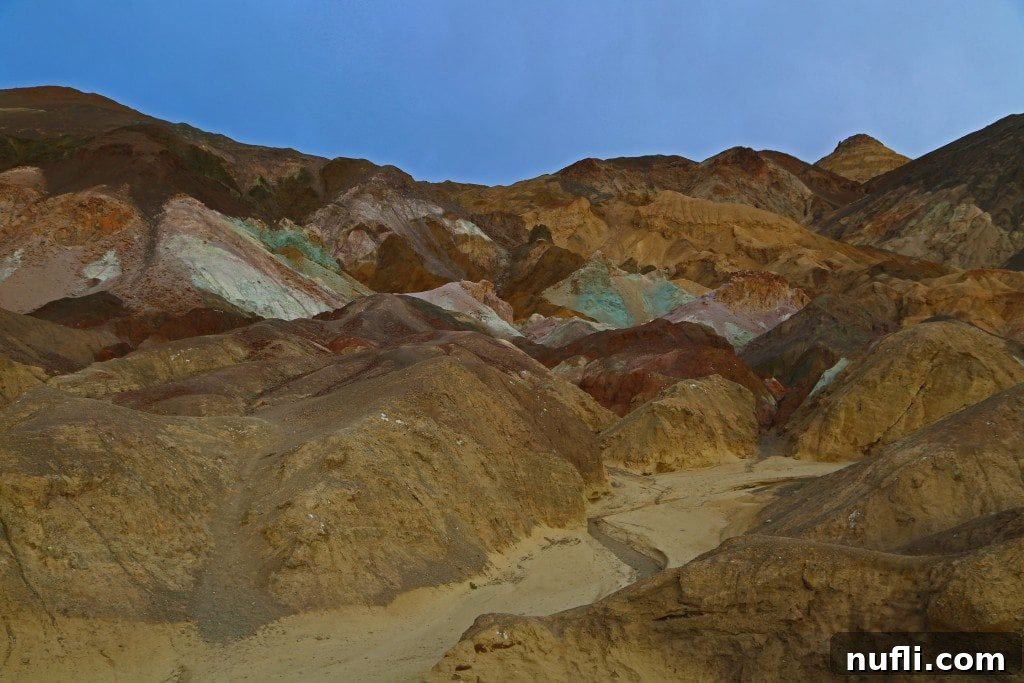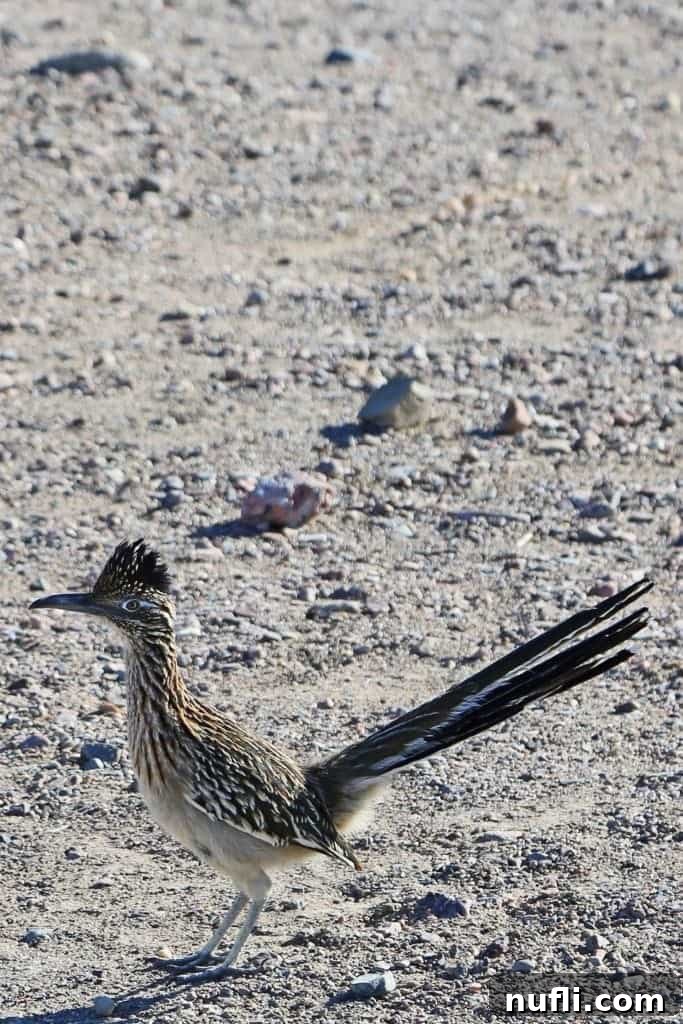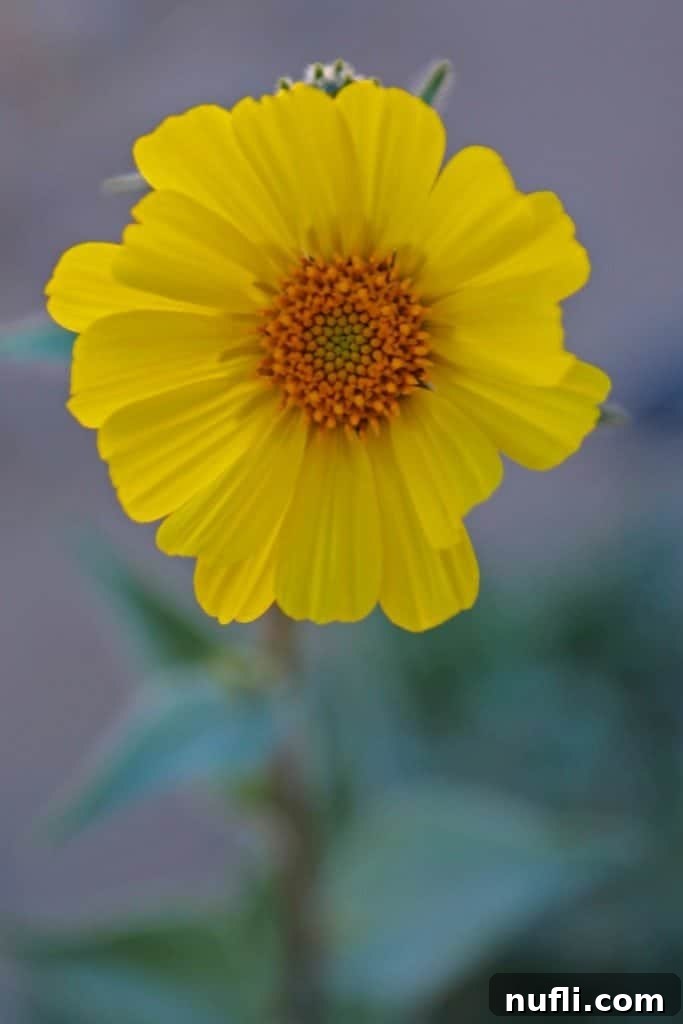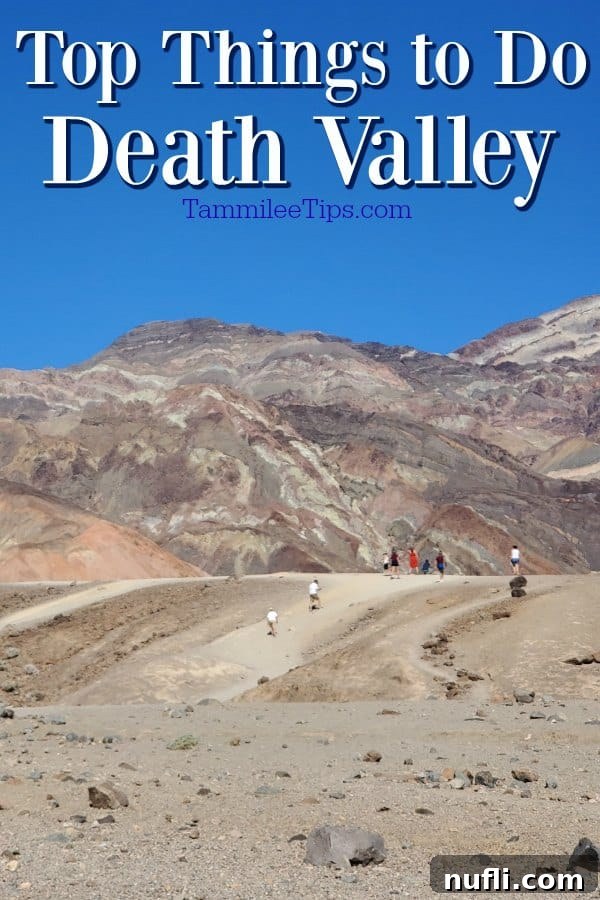Death Valley National Park, a land of extremes and breathtaking beauty, consistently ranks among our most cherished national parks. Each visit unveils a new layer of wonder, defying conventional expectations of a desolate desert landscape. While often depicted as an unforgiving expanse of heat and aridity, Death Valley surprises visitors with its unexpected oases of life, water, and shade. This comprehensive guide will take you through the myriad of incredible experiences awaiting you in this captivating park, revealing why it’s far more than just a hot, dry place.
From towering sand dunes and vast salt flats to vibrant badlands and historical mining sites, Death Valley offers an astonishing array of activities. Its sheer scale and diverse ecosystems mean that adequately exploring its wonders requires more time than one might initially anticipate. Prepare to be immersed in a landscape unlike any other, where every turn reveals a new geological marvel or a glimpse into its rich natural and human history.

TL;DR Don’t have time to read the full article? Here are my top finds:
🏨Hotels and Vacation Rentals
📍Tours
Unforgettable Experiences: Top Things to Do in Death Valley National Park
Death Valley National Park is an extraordinary destination, constantly revealing new facets even to seasoned visitors. Its vastness and unique geological features ensure that every trip offers fresh discoveries. Prepare to be captivated by its raw beauty and diverse attractions, from otherworldly landscapes to fascinating historical sites.

To enhance your exploration, consider joining one of the amazing tours offered in Death Valley. You can find a range of options that provide unique insights and guided experiences HERE.
Exploring the Furnace Creek Area: Iconic Death Valley Attractions
The Furnace Creek area serves as the bustling heart of Death Valley, offering a concentration of some of the park’s most iconic and easily accessible attractions. This central hub is an excellent starting point for any visitor.
- Golden Canyon Hike: Embark on a rewarding 2-mile round trip hike through Golden Canyon, a captivating journey into the heart of the park’s badlands. As you venture deeper, you’ll be enveloped by towering, eroded hillsides that glow in shades of gold and amber, especially during sunrise or sunset. For a more extended adventure, consider linking up with the Red Cathedral or Gower Gulch loop trails to explore more of this spectacular terrain.
- Artist Drive and Artist’s Palette (MUST DO): This 9-mile paved scenic loop is an absolute must-do, offering one of the most visually stunning experiences in Death Valley. Wind your way through volcanic and sedimentary hills painted with an incredible spectrum of colors – blues, greens, pinks, and purples – created by the oxidation of various metals. Be sure to stop at the designated overlook for Artist’s Palette, where the vibrant hues are most concentrated, providing unparalleled photographic opportunities that capture the park’s artistic grandeur.
- Devil’s Golf Course: Witness an immense, otherworldly expanse of rock salt, intricately eroded by wind and rain into jagged spires and crystalline formations. The surface is incredibly rough and sharp, resembling a chaotic, natural golf course. It’s a truly unique landscape that captivates with its stark beauty and the faint crackling sounds of salt crystals expanding in the heat. When visiting, ensure you wear shoes with very thick soles to protect your feet from the incredibly sharp terrain. Note that the unpaved road leading to Devil’s Golf Course can be temporarily closed after heavy rains.
- Badwater Basin: Stand at the lowest point in North America, a staggering 282 feet (86 meters) below sea level. Badwater Basin is a vast, surreal landscape of white salt flats stretching to the horizon. This wheelchair-accessible marvel is a quintessential Death Valley experience. A prominent sign near the parking lot allows for fantastic photo opportunities, proudly displaying just how far below sea level you are. Take a walk out onto the salt flats to fully appreciate the immense scale and stark beauty of this geological wonder.
- Zabriskie Point: Renowned for its panoramic views of the vibrant, undulating badlands, Zabriskie Point is particularly spectacular at sunrise and sunset. A short, paved uphill walk from the parking lot leads you to the overlook, where you’ll be greeted by an expansive vista of deeply eroded, multi-colored hills. The interplay of light and shadow at these times brings out the rich ochre, brown, and yellow tones of the geological formations, making it a photographer’s paradise.
- Dante’s View: Offering one of the most breathtaking panoramic vistas in the entire park, Dante’s View sits perched 5,000 feet above the floor of Death Valley. From this incredible vantage point, you can gaze down upon Badwater Basin, the salt flats, and the majestic Panamint Mountains in the distance. The contrast between the valley floor and the towering peaks is astounding. The paved road to Dante’s View is generally accessible to vehicles less than 25 feet in length, making it an easy drive to an unforgettable viewpoint.
- Harmony Borax Works: Step back in time at the Harmony Borax Works, a historic mining site dating back over 120 years. This preserved outdoor museum offers a fascinating glimpse into the arduous process of borax extraction in the late 19th century. Learn about the iconic 20-mule teams that were used to haul borax 165 miles across the harsh desert to the railroad town of Mojave, an incredible feat of engineering and perseverance.

Adventures in the Stovepipe Wells Area: Dunes and Desert Oases
The Stovepipe Wells area, situated in the central part of the park, is famous for its stunning sand dunes and a rare desert oasis, offering unique opportunities for hiking and wildlife viewing.
- Mesquite Flat Sand Dunes: The iconic Mesquite Flat Sand Dunes rise majestically nearly 100 feet from the valley floor, creating a mesmerizing landscape that is a highlight for many visitors. The best times to visit are early morning or late afternoon when the light is soft, casting dramatic shadows and illuminating the subtle curves of the dunes. Early morning visits also offer the chance to spot intricate animal tracks left by nocturnal wildlife, providing a rare glimpse into the desert’s hidden life. Hiking on the dunes can be strenuous; always carry plenty of water and wear appropriate footwear.
- Salt Creek Interpretive Trail: Discover a surprising oasis of life at Salt Creek, an easy and family-friendly hike along a wooden boardwalk. This rare desert stream is home to the tiny and endemic Death Valley pupfish, an incredible species that has adapted to the extreme conditions. Look closely into the water for movement; these incredibly tiny fish are a testament to the resilience of life in the desert. There is minimal shade on this trail, so come prepared with a wide-brimmed hat, sunglasses, and ample water to stay comfortable.

The Remote Wonders of Scotty’s Castle Area: Mystery and Solitude
The northern reaches of Death Valley, often referred to as the Scotty’s Castle area, are home to some of the park’s most remote and mysterious attractions, requiring a bit more preparation to reach but rewarding visitors with truly unique sights.
- The Racetrack Playa: Venture into one of Death Valley’s most enigmatic locations, The Racetrack Playa. This perfectly flat, dry lakebed is famous for its mysteriously sliding rocks, which appear to move across the playa surface, leaving long trails behind them. While the exact mechanics were long debated, it is now understood that a rare combination of ice, water, and wind causes this phenomenon. Reaching this remote site requires a high-clearance vehicle and a drive of approximately 27 miles over a rough dirt road. The journey is an adventure in itself, leading to a truly unparalleled natural mystery.
- Eureka Dunes: Towering nearly 700 feet tall, the Eureka Dunes are the highest dunes in California and among the tallest in North America. These magnificent dunes are renowned for their “singing” sand – a low hum that can sometimes be heard as the sand shifts. The Eureka Dunes are a delicate ecosystem, home to rare and endangered plants and animals found nowhere else on Earth. To protect this unique biodiversity, activities such as sandboarding and horseback riding are prohibited. The journey to the dunes offers stunning views and a sense of profound solitude.
- Scotty’s Castle: Historically, Scotty’s Castle was a fascinating and opulent mansion in the northern part of the park, built in the 1920s as a desert retreat. While it remains a significant historical landmark, it is currently closed for extensive repairs following severe flash floods. We recommend checking the official National Park Service website for the latest updates on its reopening before planning a visit.

Discovering the Panamint Springs Area: High Views and Unique Flora
On the western edge of Death Valley, the Panamint Springs area offers stunning high-desert landscapes, breathtaking overlooks, and unique botanical sights, providing a different perspective of the park’s diverse terrain.
- Aguereberry Point: After navigating a 6-mile dirt road, visitors are rewarded with the spectacular Aguereberry Point, an overlook situated an impressive 6,433 feet above Death Valley. The expansive views from this elevation are truly breathtaking, offering a panoramic sweep of the valley floor, the surrounding mountain ranges, and a sense of the immense scale of the park. It’s a fantastic spot for photography, especially during the softer light of morning or late afternoon.
- Lee Flat Joshua Trees: For a unique botanical experience, drive the rugged Saline Valley Road to a junction in Lee Flat. Here, you’ll encounter the best stand of tree-sized yuccas in the entire park – a dense forest of majestic Joshua Trees. The gravel road in either direction provides excellent views of these iconic desert plants, their distinctive silhouettes standing tall against the stark landscape. It’s a wonderful opportunity to witness a different kind of desert beauty and capture some memorable photographs.
For those seeking guided adventures or deeper insights into Death Valley’s wonders, a variety of amazing tours are available. Explore options and book your experience HERE.
Planning Your Visit to Death Valley: Essential Tips
To ensure a safe and enjoyable trip to Death Valley National Park, consider these important planning tips:
- Best Time to Visit: The ideal time to visit Death Valley is from late fall through early spring (October to April), when temperatures are much milder and more conducive to outdoor activities. Summers are extremely hot, with daily temperatures often exceeding 100°F (38°C), making extensive outdoor exploration challenging and potentially dangerous.
- Where to Stay: Accommodation options within the park include The Oasis at Death Valley (Furnace Creek Ranch and Inn) and Stovepipe Wells Village Hotel. There are also several campgrounds available for those who prefer to camp. Outside the park, limited lodging can be found in nearby towns like Beatty, Nevada, and Pahrump, Nevada.
- What to Pack: Essential items include plenty of water (at least 1 gallon per person per day, more if hiking), sun protection (wide-brimmed hat, sunglasses, high SPF sunscreen), layers of clothing for fluctuating desert temperatures, sturdy hiking shoes, and a first-aid kit. A physical map of the park is also highly recommended due to limited cell service.
- Getting Around: A private vehicle is essential for exploring Death Valley due to the vast distances between attractions and the lack of public transportation. Ensure your vehicle is in good condition, and always carry extra water and an emergency kit, especially when venturing to more remote areas. Gas stations are available within the park (Furnace Creek, Stovepipe Wells, Panamint Springs), but they are few and far between, so plan your fuel stops carefully.
- Safety Tips: Hydration is paramount in Death Valley. Drink water frequently, even if you don’t feel thirsty. Be aware of the signs of heat exhaustion and heatstroke. Stay on marked trails and roads, and inform someone of your itinerary if you plan to hike in remote areas. Cell service is unreliable, so do not depend on it for navigation or emergencies. Be respectful of wildlife and never feed animals.
Beyond Death Valley: More California and Nevada Adventures
If you’re extending your travels in the region, consider exploring these fantastic destinations:
California National Parks
Napa Valley Wine Train
Manzanar National Historic Site
Sierra Sky Ranch – Oakhurst/Yosemite
California Big Trees Road Trip
Epic Hot Springs in California
Check out all of our California Travel Guides
Plus check out these great Nevada National Parks
Embrace the Majesty of Death Valley National Park
Death Valley National Park is a destination that consistently surprises and amazes. Far from a desolate wasteland, it is a vibrant tapestry of extreme landscapes, rich history, and incredible resilience. Whether you’re drawn to the geological wonders of Badwater Basin and Artist’s Palette, the mysterious allure of The Racetrack, or the serene beauty of the Mesquite Flat Sand Dunes, Death Valley promises an unforgettable adventure.
Its diverse offerings, from challenging hikes to accessible overlooks, ensure that every visitor can find something to marvel at. By taking the time to plan your visit thoughtfully and embracing the park’s unique environment, you’ll discover why Death Valley holds a special place in the hearts of those who venture into its depths. So, pack your bags, prepare for wonder, and set off to explore one of America’s most extraordinary national treasures.
